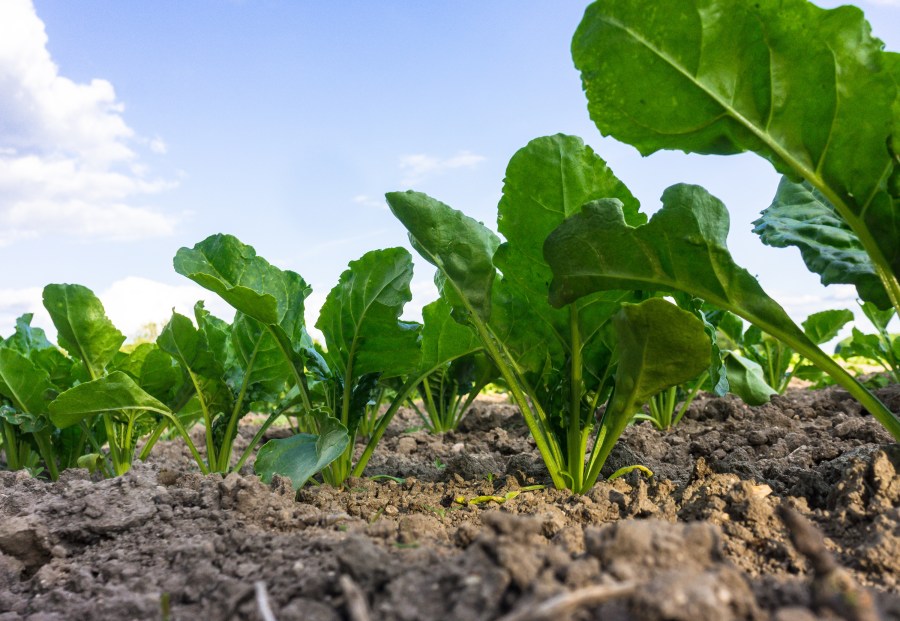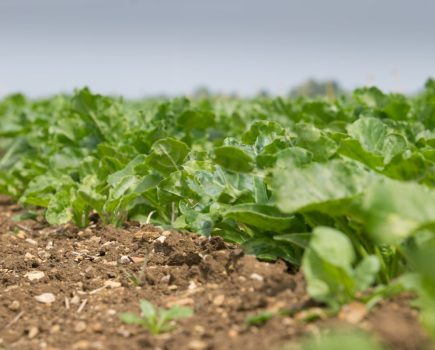As knowledge of how to manage soils improves at a rapid pace, growers are adjusting their approach to sugar beet in a quest to offset sustainability concerns regarding the crop. CPM hosts this month’s Common Ground discussion to find out more.
“When used as a strategic crop, it can achieve great things.” PHILIP WRIGHT
By Janine Adamson
In many ways the quest to find the optimum break crop continues, but for some, the answer will long remain sugar beet.
While in the past the crop may have found itself under scrutiny due to its late harvest which can negatively impact soil health, the industry has progressed, and many growers now take a longer-term view when it comes to managing their soils.
In some cases this has meant adapting their approach to growing sugar beet to not only mitigate sustainability concerns, but to ensure optimum yield output to support on-farm profitability.
To discuss this topic further, CPM brings together Norfolk-based farm manager, Toby Hogsbjerg; independent cultivations expert, Philip Wright; and BASF’s business development manager and former agronomist, Iain Ford.
Toby manages the Wicken Estate in Castle Acre near Swaffham – a 950ha soil health-orientated system featuring winter wheat, winter barley, oilseed rape, spring barley, sugar beet, potatoes, spring peas and game cover. The estate’s soils range from blow-away sand to sandy clay loam.
Philip was technical director of Simba International before establishing Wright Resolutions – a consultancy business specialising in agricultural cultivation and establishment machinery.
Sugar beet’s value
To open the discussion, Toby shared why he believes sugar beet has become a key component of the Wicken Estate’s cropping rotation. “Being in north Norfolk, sugar beet is a standard break crop – we’re on light land within 20 miles of the factory.
“But beyond this it’s a superb, clean-up crop for us and offers something totally different – from its establishment mid-March before we start planting potatoes, to being able to use different herbicides for weed control.
“Having a ring-fenced farm with fully concrete tracks, pads and areas to put sugar beet on, facilitates harvesting during the winter when conditions are right. We can store the beet well and get them to the factory without creating damage to the farm in the meantime,” he explained.
Adding to Toby’s endorsement, Philip highlighted sugar beet’s role in adding structure to soils. “As a crop, the roots fire and power down to open the soil up; it tends to be harvest and the aftermath from that which causes the damage, not the crop itself. When used as a strategic crop it can achieve great things, so it’s a question of trying to minimise the downsides.”
According to Philip, ensuring soils are in a resilient state in the first place helps their recovery post a root crop harvest. “Focus on prevention rather than cure.”
Fostering soil health
Expanding on the topic of soils, Toby revealed that since his appointment at the estate six years ago, he’s instigated distinct changes in a bid to overcome the ‘new normal’ weather conditions.
“The biggest issue we’ve experienced during that time is the 900mm of rain which has fallen during autumn in five out of those six years. That’s incurred some monumental damage when lifting potatoes or sugar beet, purely due to the quantity of rain.
“As such, we’ve adopted a fairly strict regime where the beet area is cover cropped in July straight after barley, that’s then grazed by sheep before being destroyed in January,” he continued. “Turkey litter is applied, followed by a min-till light cultivation with a Sumo Trio. Then we use a cultivator to knock the headlands down, tidy up and make a seedbed. If it’s heavier land, we’ll direct drill straight into the Sumo if we can.”
With this approach, Toby said ground cover is maintained and sugar beet establishment has improved, while the farm has also reduced its cultivation passes. “That said, some fields have to be ploughed as we’re on light land which doesn’t restructure itself – the plough is a reset. When I joined the estate I didn’t want to plough, but I’ve since realised that it actually makes a big difference.”
As for this season’s beet crop, Toby shared that he’s optimistic, to which Iain responded he believes that’s a result of Toby’s cover crop-based regime. “It’s been so dry at the moment that many sugar beet crops are really struggling. However, those which have been planted into good conditions with some moisture are faring better,” commented Iain.
Crop inputs
Moving to crop inputs, Toby said he focusses on maintaining green leaf area which he achieves primarily through managing nutrition and application of biostimulants. “It’s all about trying to keep leaves healthy and growing for a more resilient crop.
“We also use Revystar XE (fluxapyroxad+ mefentrifluconazole) – an early application and then a second on the later harvested beet – to help with green leaf retention and to keep disease out which is a major debilitation to stressed crops.”
Toby then highlighted the fact that sugar beet crops aren’t as big as they used to be and this is having an unintended impact. “Targeted breeding has reduced the canopy to make harvesting easier meaning there’s a smaller area to protect which still has to do just as big a job.
“With a lot less leaf to propel the motor as such, we really have to look after the crop as we go into the winter.”
Iain added that since its authorisation in sugar beet, Revystar XE has continually demonstrated its crop safety. “It’s kind on the crop, provides excellent control of all main diseases, and really does help to maintain green leaf area for a much longer period, and that’s resulted in better yields.
Trial results from the past two seasons have shown how two sprays of Revystar XE at 1.0 l/ha delivered an increased yield of more than 30 adjusted t/ha compared with untreated plots, and 13t/ha more than two sprays of competitor products
“What we’ve also observed is that improved plant resilience seems to result from earlier applications, something we particularly saw last season.”
With this in mind, Toby commented that despite recent arid conditions, it doesn’t take much for disease to take hold. “Being a coastal estate, we can experience sea mist, low cloud or fog until lunchtime meaning you have moist, damp air the whole time around the crop. After that it can be bright sunshine.
“But if you have a large canopy you have ideal conditions for disease so you can’t be complacent during dry weather. We had a heavy dew this morning and that alone can be enough in a canopy to start disease, especially in a shaded or low area of a field.
“You have to be aware of the risks; we’re running weather stations and disease models to help us to prepare for all eventualities.”
Offering protectant activity with longevity of control, Iain believes this is why Revystar XE stands out from other chemistry. “It’s a key advantage of Revystar – having it as a first spray is the best starting point because you know it’s going to cover all of the bases with regard to disease with long-lasting protection,” he said.
Post-harvest
Bearing in mind concerns regarding the impact on soils from harvesting sugar beet, Philip highlighted the benefits which can in fact be achieved. “With long-lived crop canopies, the biomass return above and below ground is very beneficial.
“Then it’s a case of focusing on getting the next crop in to fire more roots down and quickly mop up what’s left, while exploiting what’s been achieved with the sugar beet.”
He reminded that although the weather can’t be controlled, harvest should be avoided if soils are plastic. Equally, drainage is often a neglected factor. “It can be a thankless task repairing ditches in the middle of winter but it’s massively important and there’s no shortcut for that. It’s investing in both your soils and your infrastructure.”
For Toby, he said his aim is to turn fields around quickly, drilling straight after the sugar beet harvester. “If conditions are marginal then we’ll potentially plough the plot and combi drill one after the other, meaning wheat can establish within 2-3 weeks of the beet coming out.
“We drill everything with a combi drill – cereals after a root crop – so we achieve a nice level finish and good establishment. If we don’t achieve this and fields are left until the spring, wheelings fill up with water, the soil is damaged and waterlogged, and compaction really takes its toll on the land.”
Iain added that although the group was discussing sugar beet, ensuring all crops in the rotation are both established and harvested in a sustainable way is an integral part of rotation management. “Looking after soils will benefit the current crop, but also the following crops in future years too.”
Additional thoughts
Philip raised that although he’s primarily a cultivations expert, he appreciates the importance of an integrated approach. “It’s a chain whereby if one link breaks, the whole system doesn’t work which is why attention to detail right from the outset is critical.
“If you can create a resilient crop which is established in the correct conditions, chemistry then comes in and can be supportive rather than being the only last resort,” he said.
Referring back to Revystar XE specifically, Toby pointed out that there’s an added benefit when it comes to integrating livestock in the rotation. He shared that where the product had been applied to the growing crop, the sugar beet tops were safe to be grazed at a later date.
Iain confirmed that there are no restrictions on Revystar XE when it comes to livestock grazing providing the harvest interval of 28 days is observed.




